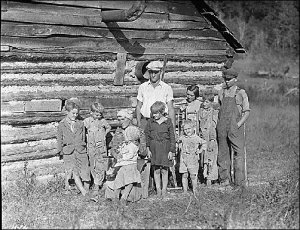Medical care on the frontier came in a variety of forms. Doctors could provide care (see last post), but people also relied on their own herbal concoctions and traditional Native cures. Charles Goodnight (who with his partner established the first cattle ranch in the Texas panhandle) believed firmly in the power of buffalo fat. He and his wife made buffalo soap that Goodnight felt would cure almost anything: “I am satisfied it will relieve rheumatism. Try it for tuberculosis. I do believe it will work.”
Medicine shows provided more fun, though, and were always popular when they reached town. These shows might be only one-wagon affairs, or they might contain several wagons and a tent. Even the one-wagon show could cram in plenty of supplies and bottled “cures.”
The wagons were usually brightly painted and splashed with the name of the particular show, but it was mainly up to the pitchman to move products. This person might be a doctor, clergyman, or learned professor–or at least call himself one–and usually enhanced his character by dressing in a fancy long-tailed coat and tall silk hat. The voice was everything, and most pitchmen could whip a crowd into a passion for the alcohol-laden line of remedies they peddled.
Medicine shows were also shows, often featuring a female who might dance, sing, or play an instrument. A man might do magic tricks like eat fire, trade dialogue with the pitchman in a comedy routine of sorts, or show off with tricks like rope spinning. Early showmen often attacked the competency of the local doctor(s) in order to secure their own business; doctors countered by trying to get the shows run out of town. Later, the two entities learned to co-exist. Doctors quietly allowed the show to run its course, then sold the same (leftover) stock that had so impressed the locals.








